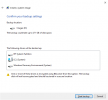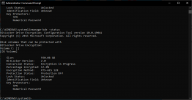NETWizz
Well-Known Member
- Reaction score
- 1,885
Yeah... I am still Upgrading my computer. I would much rather configure a network switch.
Today I migrated from a SATA III SSD to an m.2 NVMe. I won the Windows lottery because it didn't need to re-activate for that change!
I tried to image it with the built in Windows 10 tools, but it wouldn't restore. It's basically a half-ass Microsoft product that doesn't work well. I copied this stuff to another, random 2 TB HDD I had laying around. One would think if you could make an image, you could restore it, but I got errors trying to restore it to an NVMe

Next, I decided to try Macrium Reflect Free, and to my shock it worked awesome. Heck, I just closed everything for good measure and told it to Clone the Disk. It took care of everything and finished quite quick.

Next, I benchmarked the new NVMe. It's almost 4x faster than the SSD it is replacing, so I am quite satisfied.

I have 96 GB of RAM on order if it ever shows up... 32 for the Laptop and 64 GB for the Desktop
Bitlocker is in progress.. Of course, I have the TPM on and BIOS updated.

Today I migrated from a SATA III SSD to an m.2 NVMe. I won the Windows lottery because it didn't need to re-activate for that change!
I tried to image it with the built in Windows 10 tools, but it wouldn't restore. It's basically a half-ass Microsoft product that doesn't work well. I copied this stuff to another, random 2 TB HDD I had laying around. One would think if you could make an image, you could restore it, but I got errors trying to restore it to an NVMe

Next, I decided to try Macrium Reflect Free, and to my shock it worked awesome. Heck, I just closed everything for good measure and told it to Clone the Disk. It took care of everything and finished quite quick.

Next, I benchmarked the new NVMe. It's almost 4x faster than the SSD it is replacing, so I am quite satisfied.

I have 96 GB of RAM on order if it ever shows up... 32 for the Laptop and 64 GB for the Desktop
Bitlocker is in progress.. Of course, I have the TPM on and BIOS updated.

